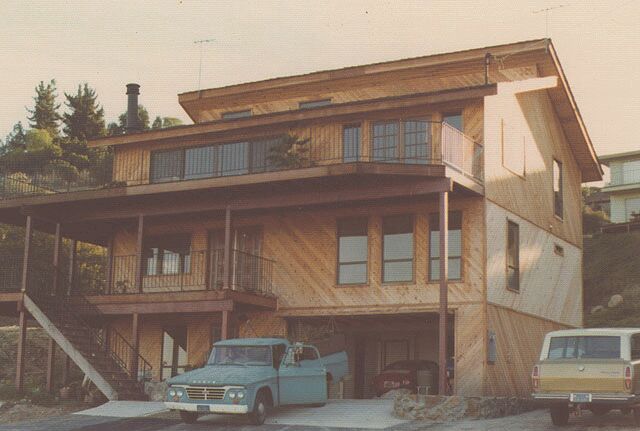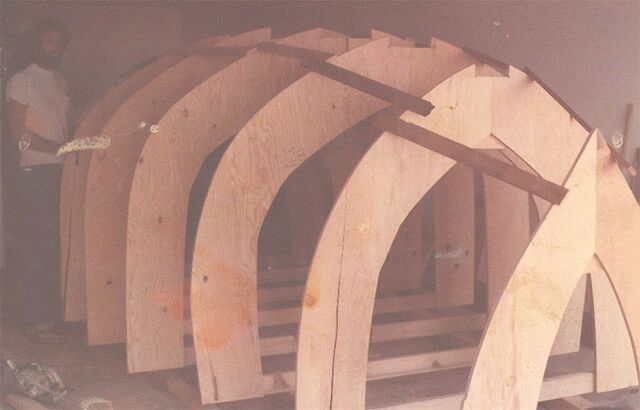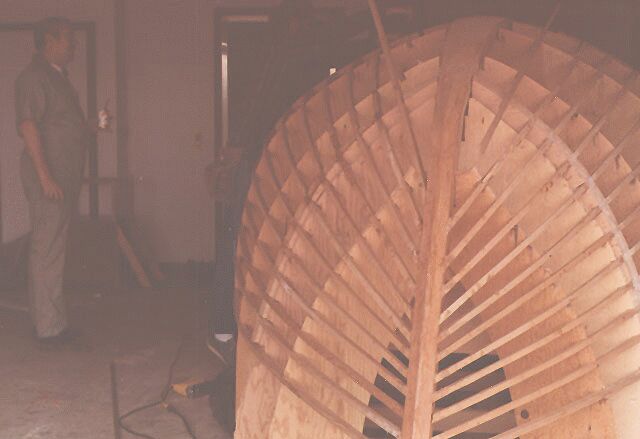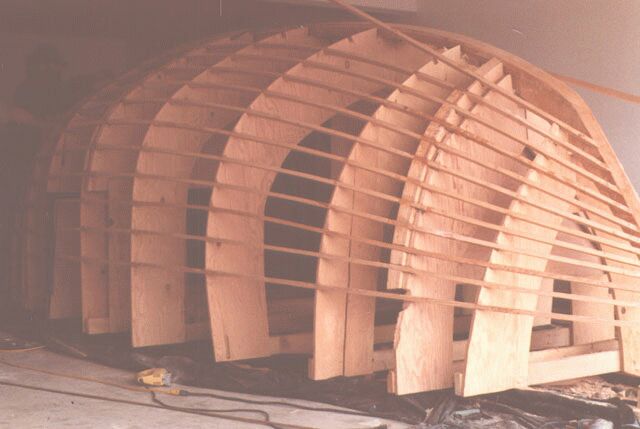Tom
Tweed's Boatbuilding Pages
Table
of Contents
Page
1- The Saga Begins
Page 2- Laminating
Page 3- Coating and Keel
Mockup
Page 4- Turning the Hull
Page 5- Interior Coating and
Decking
Page 6- The Hog Fish Era
Page 7- Closing Her In
Page 8- Details
Page 9- Finish Work
Page 10- Launching
Page 11- Sailing
Page
1- The Saga Begins
The sailboat disease started a long time ago, way
back, even before the Porsche disease. I think it
was around 1960, when I was about 12 years old, that my father
bought a little bastardized Lightning class sloop and we first
learned to sail around San Diego Bay with it, bouncing off all
manner of fixed objects and other moored boats. I think the
experience convinced my Dad that a motor was a good
thing in a watercraft, as he has owned nothing but
powerboats ever since.

In 1976, I built a 3-story house for him on the
northeast side of Mt. Helix in La Mesa, CA, (above), and there
was a 1200 sq. ft. garage and shop area on the first floor
sitting empty when we got done. My father had always had projects
going in the garage the entire time I was growing up, usually
experimental aircraft, including 3 homebuilt sailplanes he had
designed himself and then built in his spare time, and he
suggested we put the space to use. "We've got all these
woodworking tools and a few scraps of wood left over," he
noted, "maybe a little wooden boat would be fun to build in
there."
It just so happened that I had been researching
such a project for several years, and this fact was not lost on
him. The man knows how to set a hook. Before too long, I was in
possession of the plans for a beautiful little double-ended
cruising cutter designed by Chuck Paine called a Frances 26. It
wasn't much longer before we were lofting the plans into full
size patterns and erecting a male mold on a strongback on the
floor in the garage.

The hull was to be built of 5 layers of Western
Red Cedar veneers, each layer an 1/8" thick and epoxy-glued
together in a "double-diagonal" pattern, to make a very
strong and lightweight monocoque shell of "cold-molded"
plywood, but first we needed to define the shape. The temporary
station molds above do that, and then the keelson, fixed
bulkheads, and longitudinal stringers are attached to them.

The stem and sternposts were laminated and
shaped out of Douglas Fir and attached to the keelson (also D.
Fir built up to about 3" x 12" at it's widest, thickest
point) and bent over the molds, defining the bottom curve of the
canoe-shaped hull. 1" x 1" longitudinals were scarfed
full-length and attached at bow and stern and glued to the
permanent bulkheads (but not the temporary station molds) on
about 6" centers. The picture below shows the aft section
pretty well, and you can see the permanent lazarette bulkhead
between the #2 and #3 station molds, counting from the rear.

To the NEXT PAGE
Back to HOME
